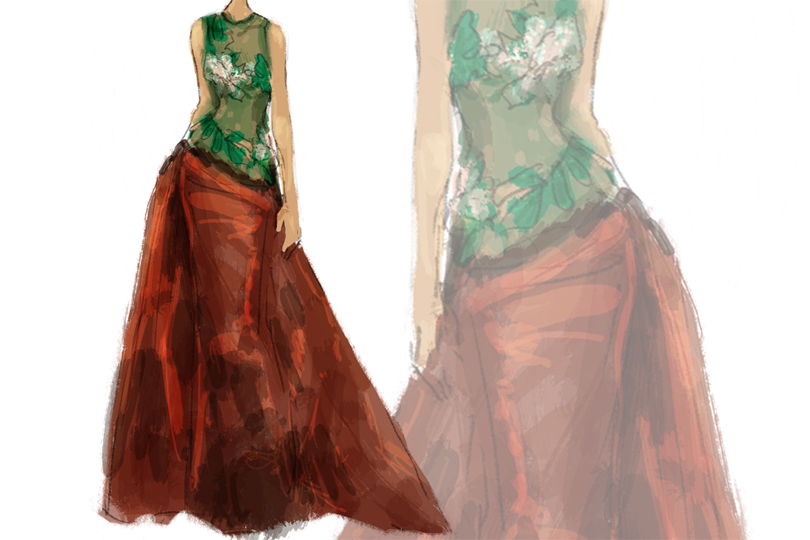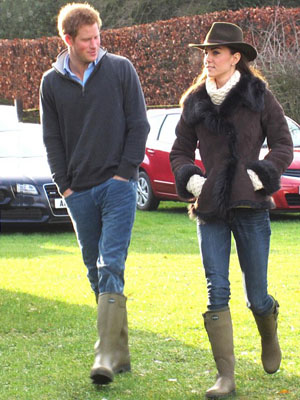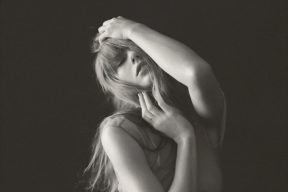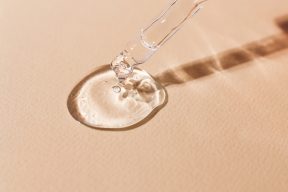Part of an ongoing series of 29Secrets stories, taking a deep dive into the history of legendary beauty products and iconic fashion and pop culture moments…
By Christopher Turner
Illustration by Michael Hak
In 2002, Halle Berry made history when she became the first woman of colour to win a Best Actress Oscar, for her role as Leticia Musgrove in Monster’s Ball. Almost as incredible as her milestone win was her gown of choice for the ceremony: a crimson number designed by Lebanese fashion designer Elie Saab that featured a sheer bodice with green and pink floral embroidery. The next morning, Berry’s win dominated the headlines, and the sensual dress made an appearance on almost every single Best Dressed roundup. It didn’t stop there.… More than 20 years later, the dress is still being talked about, duplicated, and recognized as one of the most iconic in Oscar red carpet history.
The gown was so perfect for Berry that it’s hard to believe that Saab didn’t design the unabashedly sensuous gown specifically for her. But he didn’t. In fact, the dress made its runway debut months earlier, although no one except the model ever wore it before Berry.
Here’s the story behind Berry’s big win, the gorgeous Elie Saab Couture design she wore that night, the stylist who made it all happen, and how the memorable gown helped to put Berry on the radar as one of the most fashionable women in Hollywood.
Monster’s Ball
Directed by Marc Forster and produced by Lee Daniels, Monster’s Ball premiered at the AFI Fest on November 11, 2001, and was theatrically released in North America on February 8, 2002, by Lionsgate Films. The critically acclaimed drama was written by Milo Addica and Will Rokos, and starred Berry alongside Billy Bob Thornton, Heath Ledger and Sean Combs.
The film tells the story of Hank Grotowski (Thornton), a racist widower, and his son, Sonny (Ledger), who are correctional officers in the local prison in Georgia. When Sonny commits suicide, Grotowski spirals into depression and begins a relationship with a waitress named Leticia Musgrove (Berry), initially unaware that she is the widow of Lawrence Musgrove (Combs), a man he assisted in executing.

Critics almost unanimously praised Monster’s Ball as incredibly sombre and thought-provoking, noting that the film had impressive performances all around, so it wasn’t that surprising when the film received numerous end-of-the-year accolades, or when the award season nominations began to roll in and the film received two Oscar nominations for the 74th Academy Awards, for Original Screenplay (Addica and Rokos) and Best Actress (Berry).
The designer behind the dress
Born and raised in Damour, a coastal suburb of Beirut, Elie Saab began teaching himself how to sew at the age of nine, when he took scraps from his mother’s dresses and sewed them together to create his own designs for his first clients: his sisters. By 1982, at age 18, he had launched his own label in Beirut, after a brief stint at design school in Paris. His namesake line was (and still is) a deeply romantic eveningwear-focused brand that wed Lebanese embellishments and Western silhouettes.
The label slowly caught on, particularly with brides-to-be, but things changed dramatically after Queen Rania of Jordan famously wore one of his gowns for her coronation ceremony in 1999. And when Berry wore his gown in early 2002, it took the relatively unknown designer to another level.
Saab’s net dress made its first appearance on the runway months before Berry hit the 2002 Oscar red carpet, although the original design looked quite different from the iconic gown that we all know and love. The original dress featured a sheer illusion top with minimal silk embroidery and a sweeping voluminous crimson taffeta skirt with folds of fabric that trailed behind. Breasts were clearly visible and it was risqué, to say the least.
Philip Bloch, Berry’s stylist at the time, had seen the dress and had been carrying around Saab’s look book (which included an image of it) in the summer of 2001 because he was thinking of borrowing the runway gown for another client to wear to the Emmy Awards, which were held on November 4, 2001. But Bloch changed his mind about pairing that particular actress with the gown and decided instead to wait for the right moment.
“I looked at it again and thought, ‘This is a winner’s dress, this is an Oscar dress,’ so it really was a matter of waiting for the right occasion,” he told the Globe and Mail in 2002.
Bloch knew the designer from previous dressings and Berry had actually worn a few of Saab’s gowns before, so she was open to Bloch’s suggestion that she wear the Saab dress after her Best Actress nomination was announced in February 2002.
Berry liked the dress because it was classic couture, yet sexy. But the original was too extreme – bare-breasted and extra voluminous through the skirt. So Bloch sent it back to Saab. And then Bloch had an idea and asked for the dress back again.
In order to make the gown wearable before a viewing audience of about a billion worldwide, Bloch asked Saab to add more embroidery to the top of the original dress because it simply exposed too much. Saab agreed but because of the tight timeline and distance (Saab was in Paris at the time), Bloch and Berry worked with Madeleine Aikenberg, a Hollywood seamstress who laboured intensively for a week to get the dress camera-ready. She took embroidery from a second, similar Saab gown and transferred it to the Oscar-winning gown to ensure that the breasts were covered. The strategic embroidery covered everything up, but still left something to the imagination.
“The dress was very open and you can’t go to the Oscars with your breasts hanging out,” Bloch said. “We had to place all the leaves strategically so it was respectful of the event.”
The original dress also had an exposed full-length back zipper that Bloch felt undercut the gown’s elegance. “I wanted it to be real couture, and so we moved the zipper from the centre to the left side under the arm, and made it more invisible by covering it with vines.”
The back was now wide open, but instead of sewing it completely shut, Bloch, Saab and Aikenberg decided that a more enticing option would be to leave a keyhole at the bottom of the neck and finish the seams with embroidery. Aikenberg also tapered the voluminous skirt, bringing it closer to the body for a sleeker look.
The additional, strategically placed embroidery covered the breasts but left the torso and left hip exposed. It was still daring, but Berry felt more comfortable with it, Bloch says, and after all the back-and-forth (and the alterations), it was decided that she would in fact wear Saab’s gown on Oscar night.
A history-making win
The 74th Academy Awards took place on March 24, 2002, at the Kodak Theatre in Hollywood, Los Angeles, and were largely defined by a history-making win: Berry became the first Black woman or woman of colour to be awarded the Best Actress statue.
Up against Nicole Kidman (Moulin Rouge), Judi Dench (Iris), Sissy Spacek (In the Bedroom) and Renée Zellweger (Bridget Jones’s Diary), Berry was only the seventh African American actress in history ever nominated for the award. Dorothy Dandridge became the first African American woman nominated for Best Actress in 1954 (for Carmen Jones), followed by Diana Ross (for Lady Sings the Blues) and Cicely Tyson (for Sounder) in 1972, Diahann Carroll (for Claudine) in 1974, Whoopi Goldberg (for The Color Purple) in 1985 and Angela Bassett (for What’s Love Got to Do with It) in 1993. None would win the coveted statue…until Berry.
Berry hadn’t considered that winning was an option. “Back in those days, if you didn’t win the Globe, you really didn’t get the Academy Award,” Berry told The New York Times in 2022, referring to the Golden Globe that she had lost to Spacek a few weeks earlier. “So I’d pretty much resigned myself to believing, ‘It’s great to be here, but I’m not going to win.’”
But then the previous year’s Best Actor winner, Russell Crowe (who had won for Gladiator), opened the envelope and read Berry’s name as the camera zoomed in on her teary, shocked face. She took a moment to collect herself, then walked to the stage in her now-iconic Elie Saab gown, as the audience applauded.
“I don’t have any memory of it,” Berry said later. “I don’t even know how I got up there. It was totally a blackout moment. All I remember is Russell Crowe saying, ‘Breathe, mate.’ And then I had a golden statue in my hand, and I just started talking.”
“Oh my God,” were her first words when she reached the microphone and spoke, tears still rolling down her cheeks, hands trembling as she clutched her Best Actress statuette. She hadn’t prepared an acceptance speech.
Ultimately, an emotional Berry, then 35, reflected on the magnitude of the moment. “This moment is so much bigger than me,” she explained through sobs. “This moment is for Dorothy Dandridge, Lena Horne, Diahann Carroll. It’s for the women that stand beside me: Jada Pinkett, Angela Bassett, Vivica Fox. And it’s for every nameless, faceless woman of colour that now has a chance because this door tonight has been opened.”
When the orchestra signalled her to wrap it up after about three minutes, she resisted.
“It’s been 74 years,” she said onstage, referring to all the ceremonies in which a white actress had won the award. “I got to take this time.” (It would be an evening of long speeches, clocking in as the longest Oscars ever, at four hours and 23 minutes.)
The aftermath
Unfortunately, Berry’s win didn’t open as many doors as one would have hoped, and it took eight years after her win for another Black woman to even be nominated in the category (Gabourey Sidibe was finally nominated for the Best Actress award for Precious in 2010). In fact, between 2002 and 2022, every Best Actress Oscar winner has been a white woman, and only six Black women have even been nominated in that time frame for a collective seven Best Actress nominations. That means out of the 100 nomination slots for Best Actress in the last 20 years, Black women only received seven per cent of those spots. Thing didn’t get any better with the nominations for the 95th Academy Awards, airing March 12, 2023, which were announced on January 24. This year’s Oscars has the unfortunate distinction of honouring zero Black actors in the Best Actress and Best Actor categories, despite a number of deserving performances.
On a more positive note, Berry’s crimson-coloured mesh and floral-embroidery-topped Elie Saab gown made its own kind of history when it was heralded by fashion critics around the globe in the days, weeks, months and years after it debuted on the red carpet. It’s almost impossible to find an Oscar Best Dressed retrospective that doesn’t praise the gown, which is now widely considered one of the best Oscar dresses of all time. It’s something that Saab doesn’t take for granted.
Saab has stated that Berry, in that dress in that moment, is the reason for his success. “Halle Berry made the name Elie Saab more popular.… She managed to really put the name Elie Saab on the international market. [She’s] the reason my brand took off,” he said in reflection to Vogue Australia in 2019.
It’s true. Shortly after Berry’s historic win, and the unprecedented coverage that the dress received, Elie Saab was invited by the Chambre Syndicale de la Haute Couture in Paris to be a member – a rare distinction. After the Oscars, the celebs came in droves, and over the years he has dressed the likes of Angelina Jolie, Charlize Theron, Nicole Kidman, Gwyneth Paltrow, Beyoncé, Kate Winslet, Sandra Bullock, Nicki Minaj, Emilia Clarke, Priyanka Chopra-Jonas and many more, making his designs some of the most coveted in the world. Today, his brand is global and he is one of the biggest names in fashion, dominating nearly every category from fragrance to accessories to bridal.
As for Berry, after her career milestone, her stock continued to rise in Hollywood and she continues to make an impact at the box office today. And on the red carpet? She’s considered one of Hollywood’s best dressed. Her love affair with Elie Saab hasn’t faded with time. She regularly wears the label’s designs, sparking red carpet love and press coverage…although, truthfully, nothing will ever be able to top their first outing together or that incredible crimson-coloured mesh and floral-embroidery-topped gown.
![]()
Want more? You can read other stories from our The Story Of series right here.












